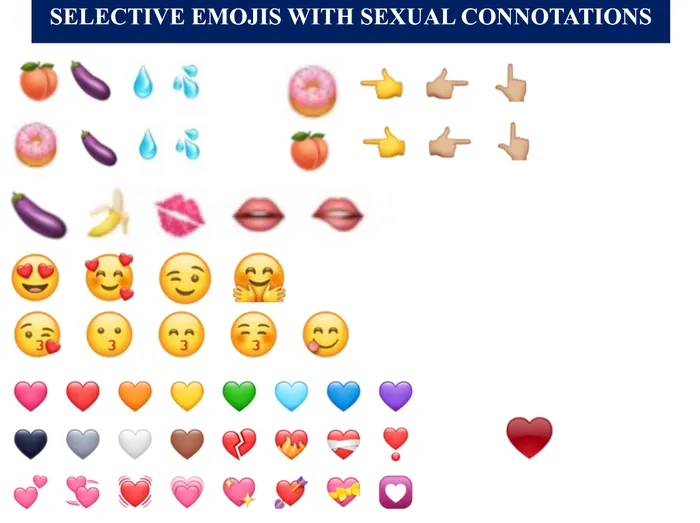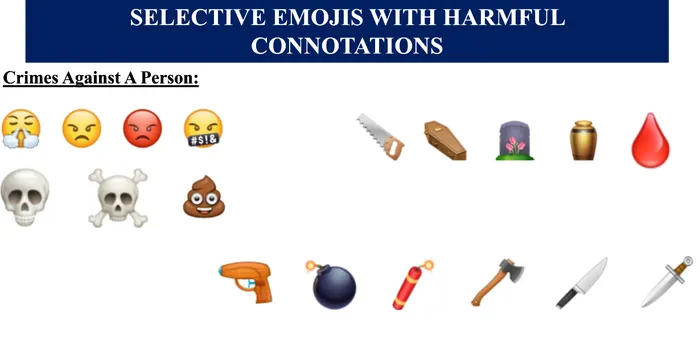'Choose your emojis carefully': Workplaces urged to establish emoji use policies

The webinar explained the interpretations of emojis and how companies should be proactive in creating policies around their use.
Image: Unsplash
Companies can no longer afford to ignore the use of emojis in the workplace, and should take steps to update their social media policies.
This was some of the main takeaways from a webinar titled, “Beyond the smile: Emojis, communication and misinterpretation in the modern workplace”, which was presented by forensic and legal linguist and researcher Dr Zakeera Docrat, and legal firm Cliffe Dekker Hofmeyr (CDH).
Docrat previously took the stand at the Judicial Conduct Tribunal hearing into sexual harassment complaints against Judge President Selby Mbenenge.
The webinar explained the interpretations of emojis and how companies should be proactive in creating policies around their use.
Docrat started the webinar with a presentation touching on some of the aspects she explained during the Mbenenge trial, and how her expertise stretched to forensic and legal linguistics and the semiotics of law linguistics.
Concerning the semiotics of law, during the trial, Docrat explained how advantageous it was to interpret socio-linguistics, as emojis are non-verbal and don’t transfer tone or accent, but must be interpreted in the specific context they are discussed.
During the webinar, Docrat explained that emojis can be interpreted in a sequence. Docrat explained how a set of eyes could be interpreted as “pervy eyes”, a hug emoji interpreted as warmth, while a yellow emoji with a tongue out and closed eyes could depict want or desire, or could be interpreted as “delicious”.

The webinar explained the interpretations of emojis and how companies should be proactive in creating policies around their use. These emojis, in certain contexts, could be seen as being used to be sexually suggestive.
Image: Screenshot

The webinar explained the interpretations of emojis and how companies should be proactive in creating policies around their use.
Image: Screenshot
The panel, which also included CDH’s Employment Law directors, Yvonne Mkefa and Anli Bezuidenhout, shared some personal experiences with Bezuidenhout using the example of how older generations would often respond to emails in full text while the younger generation would respond with a thumbs-up or heart emoji.
“We know that we’ve been using emojis since we’ve had cellphones, and suddenly, everything is depending on how communication happens in the workplace. These characters, which are seemingly harmless and endearing, are becoming a critical form of communication,” Mkefa said.
“What is quite critical is that employees must look into their policies. There are policies that talk about language, and in certain instances, contracts, that speak about what is professional language. All of those documents (i.e codes of conduct and handbooks) should be reviewed, and there be an update on how to cater for this.”
Mkefa did add that employers shouldn’t unilaterally make sweeping decisions on the use of emojis. Bezuidenhout had pointed out that a media and/or public relations company would communicate differently from that of a legal firm.
“It cannot happen in someone’s office without engaging employees, because they do the communication.”

Dr Zakeera Docrat a researcher, forensic and legal linguist
Image: Office of the Justice
Docrat added: “You need to consult with your employees, because what you understand to be problematic emojis or communication, they may find the easiest or most effective way to communicate. It is going to be workplace-specific”.
Mkefa added that employers should put parameters on what they believe is professionalism, in relation to communication with their clients.
Mkefa added that employees should be aware of what they repost and reshare, as sometimes adding a heart emoji to a post can also communicate a message.
“In some instances, people would repost with a like (on a post). That is communicating something, and could be something that could be revisited by external parties, on what employees have communicated to the world about an organisation.
“Make sure those guidelines and guardrails are in place for effective communication without exposing the employers to liability,” she said.
Docrat added that employers shouldn’t just download an emoji dictionary or information from websites like Emojipedia to send out for employees to read and automatically be clued up on.
“You can reach out to us as forensic linguists. I think that is what we are here for as academics, to assist and guide. If a company is not sure, you can probably reach out to us, and we’d probably take a look at it and advise.
“I’d also advise that certain emojis and certain WhatsApp group chats, as part of policies, that there be provisions in those policies (stating) not to use emojis. Just a standard thing. I know that sounds terrible, but you are eliminating any possibility of issues coming up.
“If you want to communicate with each other one-on-one, that is your communication, but the minute you bring it to a workplace WhatsApp group, then suddenly things start to change,” Docrat said.
“We have different interpretations of different emojis. And also, if you are unsure of using an emoji, just don’t use it. Why do you feel the need to use it? If the recipient thinks you are unfriendly, being rude or having a bad day, well then you are in the clear."
Docrat added that she hopes that people aren’t put off from using it as they bring words to life and can be used in positive ways.
“We need to ask ourselves individually, what are we using the emojis for? Are you using it to make people feel uncomfortable or using it in positive ways? It is the same as using spoken words and written text communication,” she said. “Choose your emojis carefully.”
theolin.tembo@inl.co.za